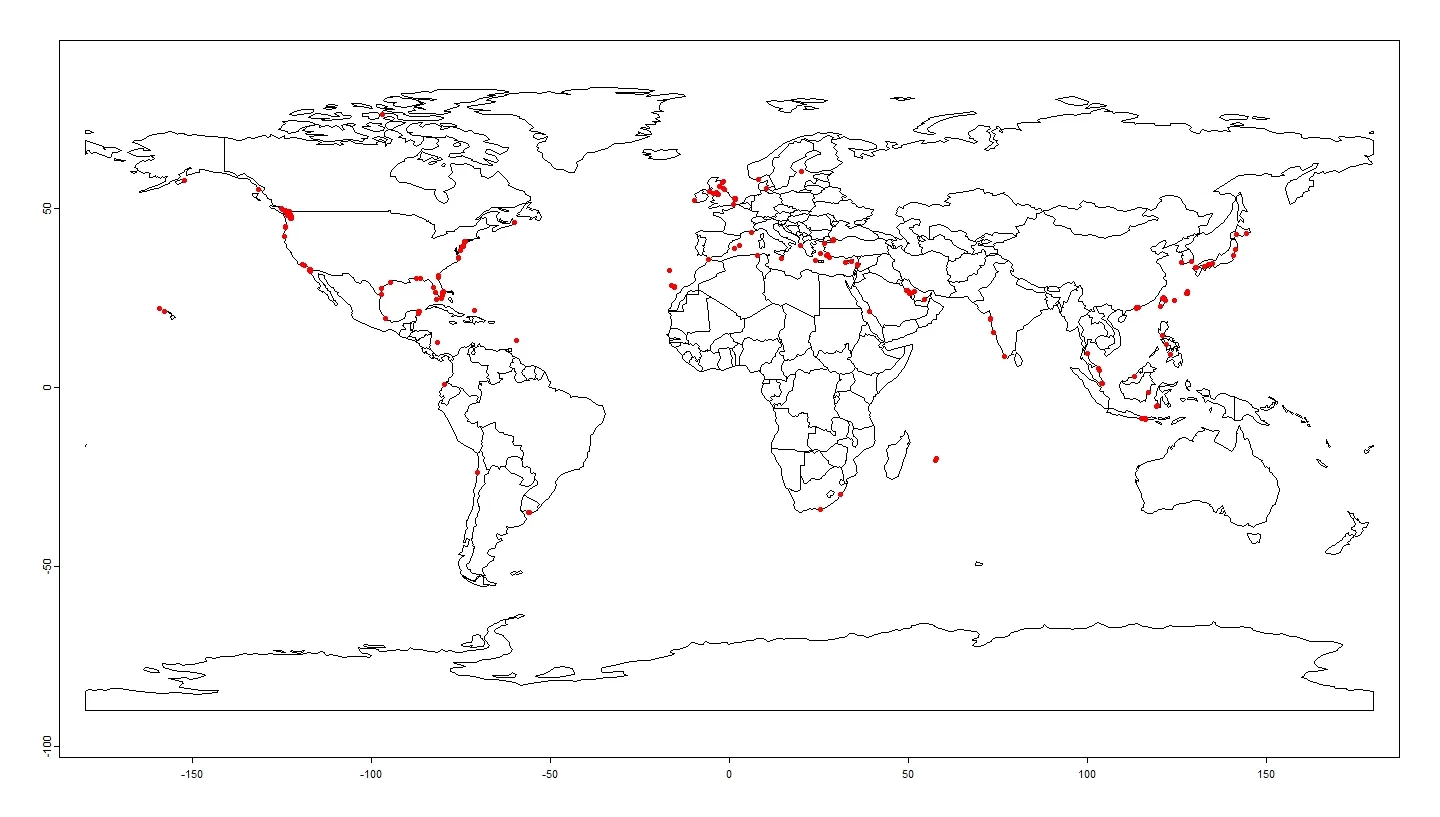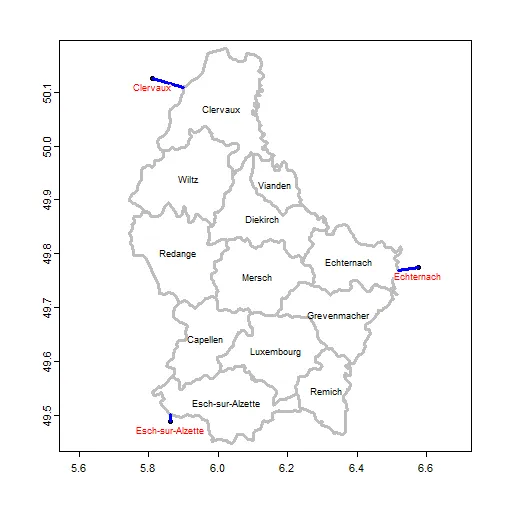我正在进行点在多边形分析
library(terra)
library(rnaturalearth)
crdref <- "+proj=longlat +datum=WGS84"
lonlat<- structure(c(-123.115684, -81.391114, -74.026122, -122.629252,
-159.34901, 7.76101, 48.080979, 31.159987, 40.621058, 47.50331,
21.978049, 36.90086), .Dim = c(6L, 2L),
.Dimnames = list(NULL,c("longitude", "latitude")))
pts <- vect(lonlat, crs = crdref)
world_shp <- rnaturalearth::ne_countries()
world_shp <- terra::vect(world_shp, crs = crdref)
world_shp <- terra::project(world_shp, crdref)
plot(world_shp)
points(pts, col = "red", pch = 20)
所有这些点都位于多边形的边缘上,因此当我尝试提取每个点所在的多边形时,会得到一个NA。
e <- terra::extract(world_shp, pts)
e$sovereignt
NA
有没有一种方法可以使用
terra包返回每个点的最近多边形?

> pts <- vect(lonlat, crs = crdref)上遇到了错误 Error in h(simpleError(msg, call)) : error in evaluating the argument 'x' in selecting a method for function 'vect': object 'lonlat' not found` - Mossa